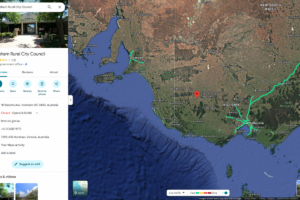
The US military’s X-37B orbital test vehicle is set to launch on its eighth mission on August 21, 2025, carrying a groundbreaking experiment that could redefine navigation technology. This mission will test a quantum inertial sensor, a potential alternative to the Global Positioning System (GPS), utilizing quantum science for navigation in environments where traditional GPS is unavailable or compromised.
Satellite-based navigation systems like GPS are integral to modern life, aiding everything from smartphones to aviation. However, GPS signals can be unreliable or inaccessible in certain scenarios, such as deep space or underwater. The quantum inertial sensor aboard the X-37B aims to address these limitations by providing a navigation system that operates independently of external signals.
Breaking New Ground in Navigation Technology
Traditional inertial navigation systems (INS) rely on accelerometers and gyroscopes to measure movement, but they can drift over time without external corrections. Quantum inertial sensors, however, offer significantly greater sensitivity and accuracy. By cooling atoms to near absolute zero and using lasers to create a superposition state, these sensors can detect minute changes in motion with unparalleled precision.
The X-37B mission will be the first to test this advanced level of quantum inertial navigation in space. Previous missions, such as NASA’s Cold Atom Laboratory, have demonstrated the feasibility of atom interferometry in space, but not specifically for navigation. The X-37B’s experiment is designed as a compact, high-performance navigation unit for prolonged missions, marking a significant leap from theoretical physics to practical application.
Implications for Military and Civilian Spaceflight
The implications of this technology are profound for both military and civilian space endeavors. For the US Space Force, it represents a step towards greater operational resilience, particularly in scenarios where GPS might be denied. For future space exploration missions to the Moon, Mars, or beyond, a quantum navigation system could serve as a reliable backup or even a primary navigation tool when Earth-based signals are unavailable.
Quantum navigation is part of a broader wave of quantum technologies transitioning from research to real-world applications. While quantum computing and communication often capture headlines, quantum clocks and sensors are poised to see widespread use first. Countries like the US, China, and the UK are investing heavily in quantum inertial sensing, with recent tests showing promising results.
Global Efforts and Future Prospects
In 2024, Boeing and AOSense conducted the world’s first in-flight quantum inertial navigation test aboard a crewed aircraft, demonstrating continuous GPS-free navigation for approximately four hours. That same year, the UK conducted its first publicly acknowledged quantum navigation flight test on a commercial aircraft. These advancements highlight the global race to harness quantum technology for navigation.
This summer, the X-37B mission will advance these efforts into space. Due to its military nature, the test may not receive extensive publicity, but its success could mark a pivotal moment in space navigation history. As quantum technologies continue to evolve, their potential applications in navigation, computing, and communication promise to reshape multiple industries.
The X-37B’s upcoming mission underscores the transformative potential of quantum navigation. If successful, it could pave the way for more autonomous and resilient navigation systems, both in space and on Earth, heralding a new era in how we explore and interact with our universe.






